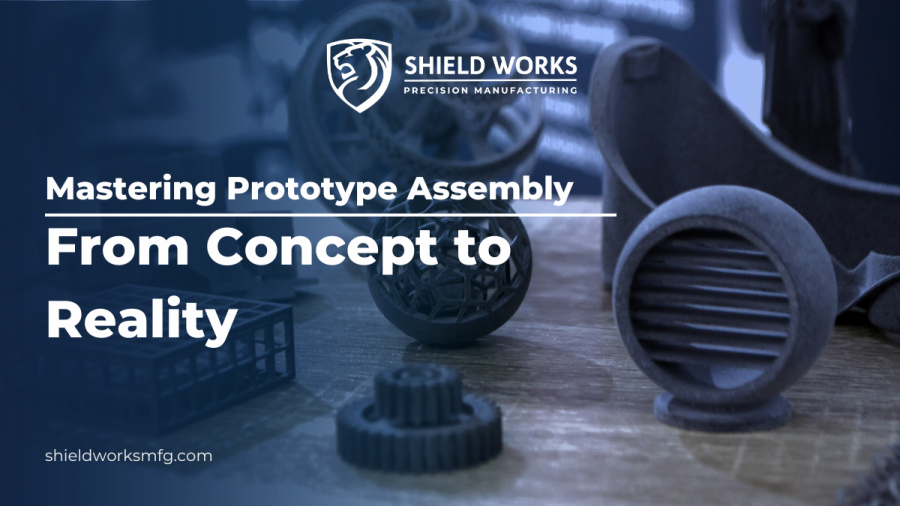Mastering Prototype Assembly: From Concept to Reality

In the fast-paced world of product development, the journey from conceptualizing an idea to bringing it to life involves a crucial phase known as prototype assembly. Prototyping serves as the bridge between imagination and reality, allowing innovators to test and refine their designs before mass production. This blog explores the significance of prototype assembly, its key components, and the essential steps in turning a concept into a tangible prototype.
The Purpose of Prototyping
Whether it’s a new electronic device, a consumer product, or a mechanical component, prototypes help uncover design flaws, assess functionality, and refine features. Here are some key purposes of prototyping:
Clarifying Requirements
Prototypes help in clarifying and refining requirements by providing a tangible representation of the product early in the development process. This helps stakeholders better understand what is being built and provides a basis for discussions and adjustments.
Visualizing Concepts
Prototypes allow both businesses and manufacturers to visualize and interact with a preliminary version of the product. This visual representation helps in conveying ideas more effectively than mere descriptions or documentation.
User Feedback
Prototypes provide an opportunity to gather feedback from end-users before the final product is developed. This early feedback loop is invaluable in identifying potential issues, improving user experience, and ensuring that the final product meets user expectations.
Reducing Misunderstandings
A prototype can help reduce misunderstandings among team members by providing a concrete reference point. It minimizes the risk of misinterpretations that can arise when relying solely on written specifications.
Types of Prototypes
There are several types of prototypes, each serving a specific purpose in the development process. The choice of prototype depends on factors such as project requirements, budget, and the stage of development. Here are some common types:
Proof-of-Concept Prototypes
These are basic prototypes created to validate the feasibility of an idea. They focus on demonstrating the core concept rather than detailed functionality.
Functional Prototypes
These prototypes aim to replicate the final product’s appearance and behavior as closely as possible. They help in testing the product’s features, performance, and user experience.
User Interface (UI) Prototype
UI prototypes focus on the visual aspects of the product, showcasing the user interface and overall aesthetics. This type helps designers and stakeholders visualize the final product’s look and feel.
Presentation Prototype
Presentation prototypes are polished and refined models used for marketing or investor pitches. While not always fully functional, they provide a realistic representation of the product’s appearance.
Key Steps in Prototype Assembly
Achieving a successful prototype requires careful planning and execution, involving creating a preliminary version of a product to evaluate its functionality, design, and performance. Here are the key steps involved in prototype assembly:
Conceptualization and Design
The first step in prototype assembly is to conceptualize and design the product. This involves creating detailed schematics, blueprints, and 3D models that outline the product’s structure, components, and functionality.
Material Selection
Once the design is finalized, engineers must select appropriate materials for each component. Considerations include the material’s strength, durability, and compatibility with the intended function of the product.
Component Fabrication
Fabricating individual components comes next. This step involves creating the parts of the product based on the finalized design. Depending on the complexity of the product, components may be manufactured using various techniques such as machining, 3D printing, injection molding, or other manufacturing processes.
Assembly Planning
Before physically putting the prototype together, a detailed assembly plan is crucial. This plan outlines the sequence in which components will be assembled, ensuring that the process is efficient and error-free.
Assembly of Components
Assembling the components is a hands-on process where each part is connected according to the assembly plan. This phase may involve soldering, fastening, gluing, or other joining techniques. Precision and attention to detail are essential to ensure the prototype functions are as intended.
Quality Control and Testing
After assembly, the prototype undergoes rigorous quality control checks. This includes inspecting each component for defects, ensuring proper connections, and validating the overall structural integrity. Following quality control, the prototype undergoes testing to assess its functionality and performance.
Iterative Design
The testing phase often reveals areas for improvement. Based on the test results, engineers may need to go back to the design phase to make necessary adjustments. This iterative process continues until the prototype meets the desired specifications.
Documentation
Throughout the prototype assembly process, detailed documentation is maintained. This documentation includes records of design changes, materials used, assembly instructions, and testing results. Comprehensive documentation is critical for future reference and for providing insights into the development process.
Feedback and Evaluation:
Once the prototype is assembled and tested, feedback is gathered from stakeholders, including designers, engineers, and potential users. This feedback is invaluable in refining the product and making further improvements.
Elevate Your Prototype Assembly with Shield Works Today
Prototype assembly is a critical phase in product development that requires a combination of technical expertise, creativity, and attention to detail. Embracing this stage as an integral part of the innovation process can lead to the creation of successful and market-ready products. Understanding the purpose of prototyping, exploring different types of prototypes, and following key steps in the assembly process are fundamental to success. Prototyping can be a complex process, and having expert support can be invaluable. With the right tools and resources, such as those provided by Shield Works, you can elevate your prototyping process, enabling smoother transitions to mass production and ultimately bringing groundbreaking products to market. Tailor your prototype to specific project needs with our customization solutions. From color choices to material properties, this level of customization ensures that your prototype aligns perfectly with your vision. Are you ready to get started with your overseas assembly with us? Reach out today to discuss your project with our engineers.
